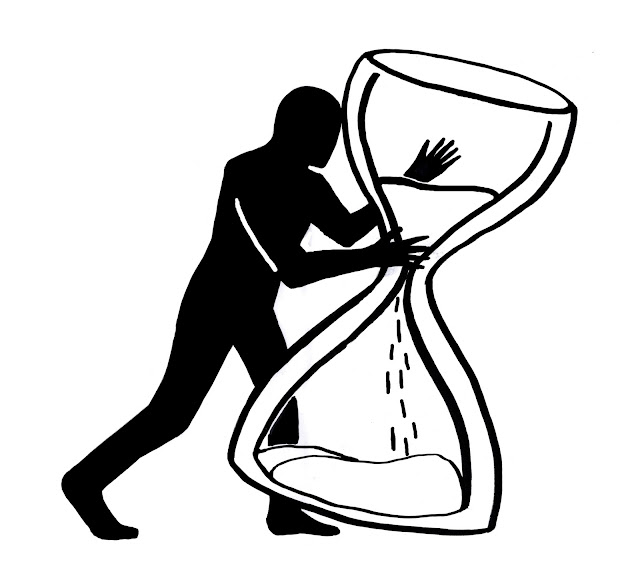Our fifth and final illustration topic came in the form of
political illustration; more specifically we were looking at Steve Bell. When I
found out that I would be studying this subject I have to say, I felt a little
apprehensive. I have only just become aware of the political world, having only
gained the ability to vote in the last couple of years, so I feel as though I don’t
know very much about politics. In the end, I feel as though I’ve done quite a
good job with my own interpretations, maybe even enjoyed making them.
Study Number One
Whilst I should have been doing work for another module, the
idea for this illustration kind of came to me. I thought that the David Cameron
Bullingdon Club scandal was too good an opportunity to miss, visually anyway.
The story came about out of a rumour about the Prime Minister’s involvement in
a society that he was a part of during his time at Oxford University. Claims of
an ‘obscene’ initiation [1] relating to a pig and a vaguely sexual act, hit the
headlines a few months ago and although the topic is quite taboo, so is a large
amount of political illustration. I made this image using Photoshop entirely using
my very basic digital painting skills, this reference image [2] and this reference image [3]. I have referenced the children’s programme Peppa Pig,
using the character of mummy pig as my tie to the Bullingdon Club story. I had
Cameron ask her to ‘call him daddy pig’ as a reference to a common sexual kink
and also mummy pig’s male companion in the show, Daddy Pig.
Study Number Two
For my second political illustration I jumped across the
pond to a rather controversial politician, currently running for presidency in
the United States. Donald Trump is the famous conglomerate business man undertakings
in real estate, sports and entertainment [4], and now politics. His involvement
in the run for presidency has been met with criticism and debate for many
reasons, perhaps most namely is the candidate’s financial status. I remembered
watching an interview with the entrepreneur stating ‘my father gave me a small
loan of a million dollars’ [5], referring to when he first started out in business.
When I first saw this, my mind instantly flashed back to the Austin Powers
films, most importantly the character of Doctor Evil who famously delivers a
similar line. So I decided to combine the two and drew Trump in the same pose and
costume as the character using this reference image of Trump [6] and this imageof Evil [7].
Study Number Three
For my third study I chose to use a technique quite commonly
used by political cartoonists and illustrators; making a direct parody or
reference to a previous work of art, and using this to make a social comment. For
my interpretation of this chose to emulate one of my favourite pieces of
portraiture, Jan Vermeer’s Girl with the Pearl Earring [8], instead replacing
the girl with Russia’s President, Vladimir Putin [9]. My comment on this image
is quite a subtle one. Putin is infamous for his opinion and laws to do with
the gay and transgender community, and this is chiefly why I chose him to be
wearing a pearl earring. There is a stigmata attached to men with pierced ears
that is tied to gay stereotypes and assumptions, which gives the image a subtle
irony. Overall, I’m quite pleased with the image itself, although it did look
better before I inked it.
Study Number Four
My
fourth and final image was an attempt at anthopomorphism, yet another technique
commonly used by political illustrators. My subject this time was the leader of
the UK Independence Party, Nigel Farage. In many photos that I have seen of him
the politician usually has his mouth wide open in a sort of toothless grin,
such as my reference image [10]. His tight, squinting eyes and flared nostrils
were somewhat reptilian and I thought that these were just crying out to be accompanied
by a flicking, forking tongue. Using this image as reference [11], I added in these rather
monstrous features and gave him a decidedly green skin tone and some grey
shading.
References
[1] Mutch, 2015.
[2] Wintour, 2013.
[3] Davies, 2015.
[4] Trump.com, 2015.
[5] Snyder, 2015.
[6] Eggert and Colvin, 2015.
[7] robertkaplinsky.com, 2013.
[8] Ebay.com, 2014.
[9] De Nugent, 2015.
[10] Baker, 2015.
[11] thinglink.com, 2013.
[2] Wintour, 2013.
[3] Davies, 2015.
[4] Trump.com, 2015.
[5] Snyder, 2015.
[6] Eggert and Colvin, 2015.
[7] robertkaplinsky.com, 2013.
[8] Ebay.com, 2014.
[9] De Nugent, 2015.
[10] Baker, 2015.
[11] thinglink.com, 2013.
Bibliography
Baker, N. 2015. TheDrinksBusiness.com. Farage forgoes
alcohol for January. [Online] [Accessed from 2015] Available from: http://www.thedrinksbusiness.com/wordpress/wp-content/uploads/2014/11/tumblr_inline_n6m8y86oc81r05kcc.jpg
Davies, E. 2015.
The Daily Mail. How Peppa Pig has
conquered Christmas... and made multi-millionaires of three friends from
Middlesex Poly. [Online] [Accessed from 2015] Available from:
http://www.thisismoney.co.uk/money/article-3342010/How-Peppa-Pig-conquered-Christmas-multi-millionaires-three-friends-Middlesex-Poly.html
De Nugent, J. 2015. Enemies can bring out the best in us.
[Online] [Accessed from 2015] Available from: http://johndenugent.us/images/putin-angry-banks.jpg.pagespeed.ce.fjVlkcA87U.jpg
Ebay.com. 2015. Your Guide to Girl with the Pearl Earring. [Online]
[Accessed from 2015] Available from: http://i.ebayimg.com/00/s/NjAwWDUwOQ==/z/ZP8AAOSwh6xTtQAK/$_32.JPG
Eggert, D and Colvin, J. 2015. Yahoo News. Trump says he’ll
release policy specifics soon. [Online] [Accessed from 2015] Available from: http://media.zenfs.com/en-US/video/video.pd2upload.com/video.ynewskatiecouric.com@df3727ac-3227-3cc1-9d7b-f1fae7858acf_FULL.jpg
Mutch, N. 2015. Theweek.co.uk. Bullingdon club: inside the
elite Oxford society. [Online] [Accessed from 2015] Available from: http://www.theweek.co.uk/65410/bullingdon-club-inside-the-elite-oxford-society
RobertKaplinsky.com. 2013. How Much Money Should Dr Evil
Demand? [Online] [Accessed from 2015] Available from: http://robertkaplinsky.com/wp-content/uploads/2013/04/drevil_cover.jpg
Snyder, B. 2015. Fortune.com. Reference to Donald Trump interview.
[Online] [Accessed from 2015] Available from: http://fortune.com/2015/10/26/donald-trump-loan-dad/
Thinglink.com. 2013. The King Cobra. [Online] [Accessed from
2015] Available from: https://blogger.googleusercontent.com/img/b/R29vZ2xl/AVvXsEgcXEEIk8Ynj2Sx2GuEs0Bth9x4nEu_MONlmIKg7Iq0sllK3mXDj4_vuch93qk2lu2PmQO7VytPTBIeJym8EomX0Vp8Rfw45bm5okW79sEtrYZqPlvGKCTx8WhXCQJs9t98gRwJqUhd78c/s1600/KingCobra.jpg
Trump.com. 2015. Donald J Trump Biography. [Online]
[Accessed from 2015] Available from: http://www.trump.com/biography/
Wintour, P. 2013. The Gaurdian. David Cameron: Tories will
work hard to win back supporters from Ukip. [Online] [Accessed from 2015]
Available from: http://www.theguardian.com/politics/2013/may/03/david-cameron-tories-supporters-ukip











